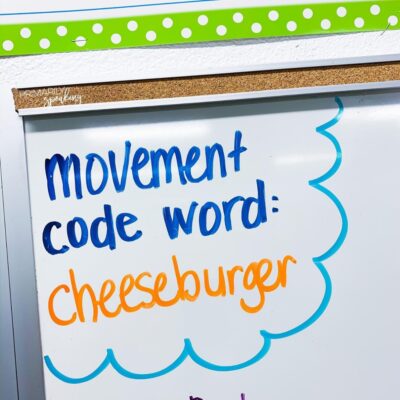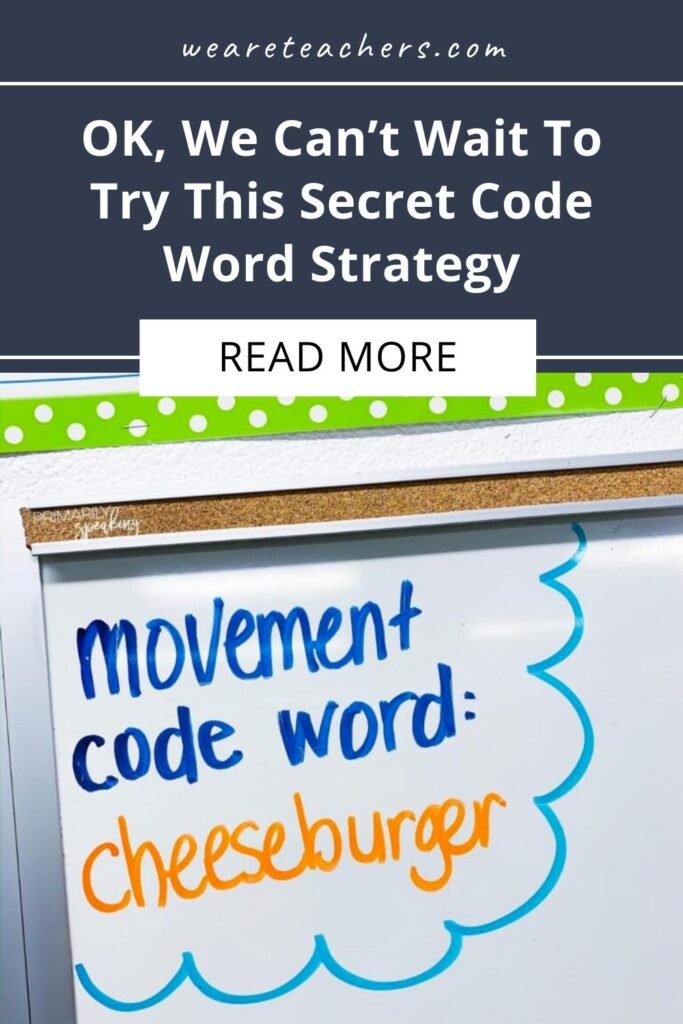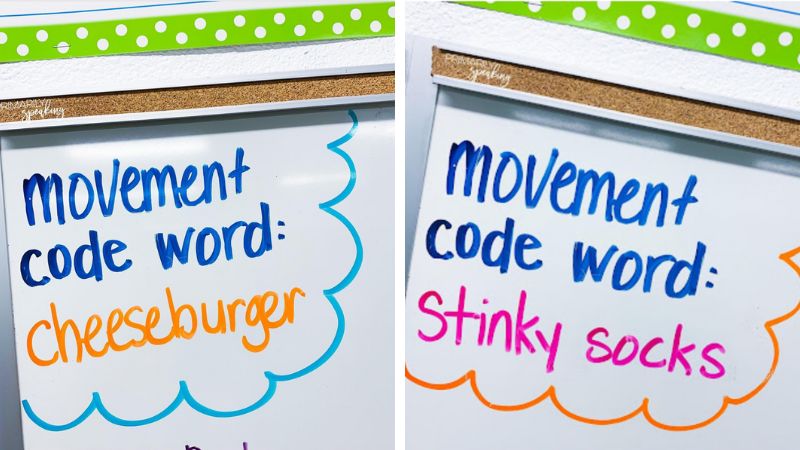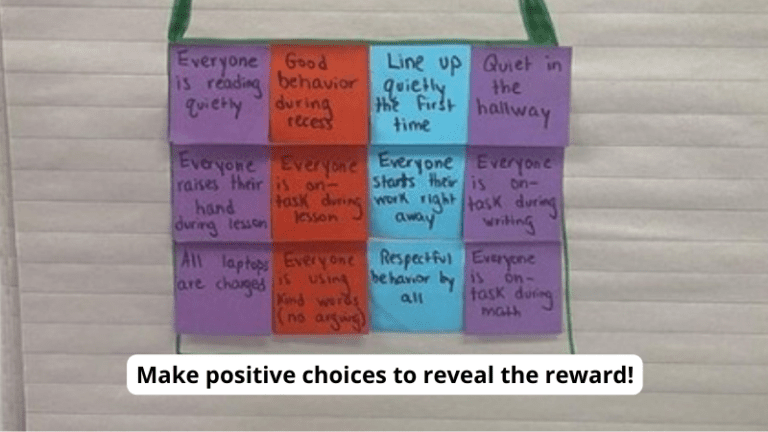If you’ve ever felt like one of the adults in a Peanuts episode when giving directions to your students, have we got the game-changing strategy for you! Most of us can relate to the frustration of kids standing up and getting started with an activity before you’ve even finished explaining it. So how do you get them to STOP and LISTEN? That’s where the code word strategy comes into play.
How does the code word strategy work?
It’s not exactly new. Aimee at Primarily Speaking wrote about it in her blog a few years ago. You may have heard it referred to as the secret word or movement code word strategy. It’s the same thing. The gist is that BEFORE you give directions, you let students know that there will be a code word. The code word is their signal that they’re allowed to move and begin the activity.
It’s definitely something you’ll have to train your students to do. Having a set routine will help. Alert them that you’re beginning the code word protocol (“Alright, folks. Code word coming!”). Let them know what they’ll be doing once (“When you hear the code word, you can find a partner and begin reading this week’s story together.”). Use the code word! (Aimee prefers “Ready, set, code word!” while other teachers like to be a bit sneakier).
 “
“
Image source: @primarilyspeaking
Is the code word strategy effective?
Would we be here if it wasn’t? Transitions can be hectic, but using a code word can interrupt that. And it feels more like a game to kids when they’re listening for a funny word. Plus, it ensures that you can deliver all those important instructions, increasing the likelihood of a successful learning experience.
What should I use as my code word?
This is really something that you can make your own, but we love the following ideas:
- Use a silly word that will make your kids laugh (hullaballoo, lollygag, cattywampus).
- Employ some subject-area academic language for extra reinforcement (polygon, microbe, democracy).
- Bring in vocabulary words you’re working on (accomplish, furious, temporary).
- Go totally random (peanut butter, labradoodle, spatula).
- Invite your students to come up with a list of words they want to listen for!
What else do I need to know?
Some teachers like to switch the code word every day. Others pick a word a week. You can print and laminate a free template like this one or you can simply write the code word on your white board.
For more classroom ideas like this, subscribe to our newsletters!


